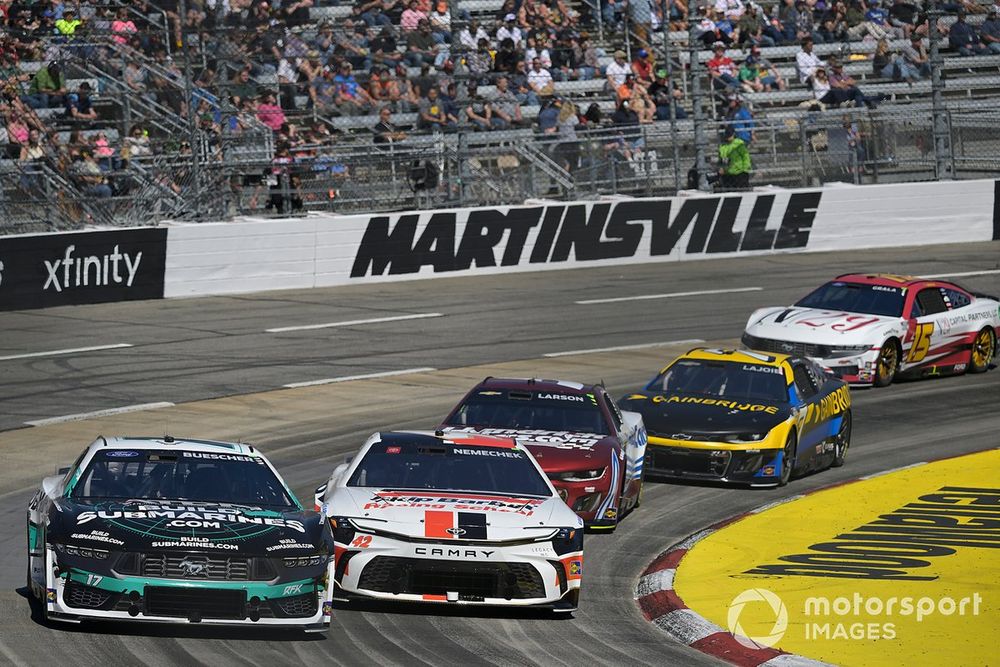The issue has been especially apparent on the three tracks 1-mile in length or less in which the package has been used so far in 2024 – Phoenix, Richmond and this past weekend at Martinsville.
While some drivers have noted some improvement in maneuverability in the car, the fields still seem to quickly get strung out with only a handful of drivers in each race able to gain positions on the track.
William Byron was one of those few in last weekend’s race – starting 18th – and ended up winning Sunday at Martinsville in an overtime finish that gave Hendrick Motorsports a victory while celebrating the 40th anniversary of its first series win.
Chris Buescher, RFK Racing, BuildSubmarines.com Ford Mustang, John Hunter Nemechek, LEGACY MOTOR CLUB, Skip Barber Racing School Toyota Camry
Photo by: John Harrelson / NKP / Motorsport Images
“We’re not naive to this,” NASCAR’s senior vice president of competition said in an interview Tuesday on SiriusXM NASCAR Radio. “We at NASCAR want our short track package to be better.
“We want that racing to be at the level that superspeedways and our intermediate race tracks are today. I promise you we are working as hard as we can with Goodyear and we need to work harder. That’s the bottom line.
“We need to work harder to come to a place, where as I said a couple of weeks ago, we need to figure out how to bottle up what we learned at Bristol and also what we learned the first 30 laps at Richmond last week on how that race unfolded.”
Focusing on the tire
The new package, unveiled in the offseason, centers around a simplified diffuser on the Next Gen car and includes the elimination of engine panel strakes, more simplified diffuser strakes and a 3-inch spoiler.
Bristol provided one of the most entertaining short track races this season, but the package was not used there. Tire fall off became an important part of that race’s dynamic when drivers were forced to make stops for new tires before the end of a fuel run.
At Richmond, the most entertaining parts of the race came at the start when the field began the race on wet weather tires due to the damp conditions.
The treaded tires provided far more grip and cars were seemingly able to maneuver around each other with greater ease until the field returned to slick tires after the track dried in about 30 laps.
Sawyer seemed to indicate tire fall off is the area where NASCAR hopes to focus its efforts.
“When you can…
Click Here to Read the Full Original Article at Motorsport.com – NASCAR – Stories…

